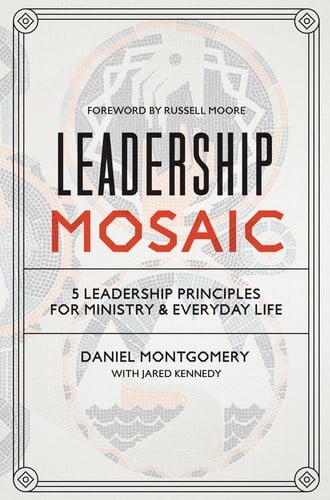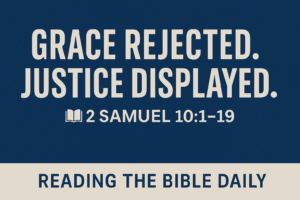⏱️ Estimated Reading Time: 4 min read
I am typically leery of taking on any Christian leadership books because the market is so overwhelmed with absolute fluff, it is sometimes hard to separate the wheat from the chaff! Many Christian leadership books simply use Christianity as a “prop” of sorts. If I’m being really cynical, I believe some market with a Christian overtone simply to gain a wider reading audience, when in fact, the content reflects little about God and much about ways we need to improve, new strategies.
But when I heard that Daniel Montgomery and Jared Kennedy were releasing a book on leadership, my interest was caught. Montgomery and Kennedy are who I have often referred to as “The Sojourn Guys.” Montgomery is the founder of the Sojourn Network, a popular organization, and resource for church planters and pastors of all kinds. I have used some of their work in the past in my multiplication and church planting endeavors, and am grateful for their ministry. Kennedy is also on staff at Sojourn. So in picking up Leadership Mosaic, I knew to some degree what I was getting into, but didn’t realize that this book would go on to become one of my favorite Christian leadership books I have read.
What makes this book work, first off, is that it is brutally honest. Right out of the gate, we have to come to grips with our present situation. We are all lost, to some degree, and when we look to leaders for guidance, we see leaders moving all different ways (18). Leadership is a bit of a “crisis in the local church” because there are “competing visions” between leaders (15). You’ve got the guy who is all about compassion for others paired up with the introverted, low-empathy theologian. The woman who leads with her soul tries to work alongside the activist, who just wants to get the job done. How do we reconcile these different strategies and viewpoints? Montgomery and Kennedy assert that what we need is a “leadership mosaic,” a five-fold look into the doctrine of the Trinity that will help us each learn how to strive for conviction, creativity, courage, collaboration, and contemplation. Instead of an approach that finds one heavyweight in each area for the team, Leadership Mosaic shows that “the Trinity is our mosaic” (25) and will help us grow in all of these areas of leadership.
Here is why you need this book, giving you an example from my own experience. I am, by nature, a convictional leader. I am very sensitive to beliefs that surpass “values” and become something I must hold tightly gripped, willing to sacrifice for. So, needless to say, the chapter on “The Convictional Leader” has a lot of “Yes” and “Amen” from me. But when I got to the next chapter, “The Creative Leader,” I was finding myself now challenged. No longer should I think of myself as “not a creative leader,” but as someone who, because of the Trinity and my image-bearing identity, must refine myself into taking seriously creative leadership. I now see how creativity and conviction must work together. This takes more than getting two people with different views getting along. It takes us all valuing the Trinitarian doctrines and our leadership enough to be willing to adapt, shift, and grow.
The book itself is a mosaic. It beautifully brings together rich theology, tested principles, personal stories, research, and challenges to make its arguments. It also implements extremely helpful charts, tables, summaries, and quote pages that help assimilate these lessons to the reader. Perhaps the most helpful component of these kinds of enhancements is how each chapter ends, with unique exercises, we can participate in to further the conversation and continue to grow.
Let me just say that my copy of Leadership Mosaic is filled with underlines, margin notes, and new ideas. Most of all, I feel like this book has given me the toolkit to actually grow in the areas I need to. I now see the theological, pastoral, and practical applications for these truths. I am grateful to Montgomery and Kennedy for their hard work in bringing us a leadership treatise that is unmissable.




